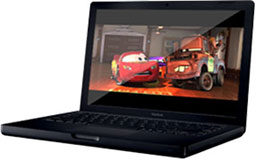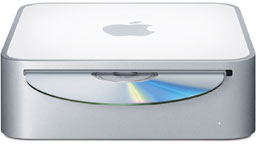Since first posting this article, we’ve heard from several readers and learned from other websites that our list of the oldest Macs that should work with Mountain Lion is on the optimistic side. It looks like all Late 2006 iMacs, all MacBooks without Nvidia graphics, all Mac Pros released before June 2007 (2006 and 2007 Mac Pros), and 2006 and 2008 Xserves will not be able to run OS X 10.8. This list is not definitive, but it’s the best we have at present.
Sometimes you just have to scratch your head and ask yourself, “What the hell is Apple thinking?”
Mountain Lion
 This week’s announcement of the Mac OS X 10.8 Mountain Lion developer preview is one of those times. As expected, it’s going to make Macs a lot more like iOS devices, which is a good thing in some ways. After all, there are iOS features that Macs should have had all along, such as Notification Center (far superior to Growl) and Reminders (better than iCal for reminders), that we’ll have on Mountain Lion Macs.
This week’s announcement of the Mac OS X 10.8 Mountain Lion developer preview is one of those times. As expected, it’s going to make Macs a lot more like iOS devices, which is a good thing in some ways. After all, there are iOS features that Macs should have had all along, such as Notification Center (far superior to Growl) and Reminders (better than iCal for reminders), that we’ll have on Mountain Lion Macs.
Other features coming to the Mac include AirPlay Mirroring, Game Center, Notes, and Twitter integration. Share Sheets will make it easy to share links on the Web, post photos and videos, email or message notes, and tweet.
Messages is available in beta to current OS X 10.7 Lion users, although early users are reporting problems where messages may reach your iPhone or iPad or Mac, but not all of them. I’m sure Apple will get a better handle on that long before Mountain Lion ships.
Gatekeeper is bound to be the most controversial feature of OS X 10.8. It’s billed as a security feature, and in its default configuration it will only allow you to use apps purchased from the Mac App Store and third party apps marked with an approved Apple Developer ID. Apple’s “more secure” option restricts that to just software from the Mac App Store. A third option allows you to use all the old Mac software you were able to use with Lion.
The Big Problem
With OS X 10.5 Leopard, Apple left behind all the G3 Macs that had been supported by OS X 10.4 Tiger, as well as refusing to install on G4 Macs clocked below 867 MHz. OS X 10.6 Snow Leopard dropped all support for PowerPC Macs, and OS X 10.7 Lion eliminated support for Core Solo and Core Duo Macs, all of which were introduced in 2006.
With each new version of Mac OS X since 10.2, some additional Macs have been left behind. We expect that, but we also expect that Apple will support almost all Macs introduced within five years of the new operating system. The biggest gripe last time around was about the Late 2006 Mac mini, which was under five years old when Lion was released and not replaced with a Lion-compatible model until Mid 2007. Still, just one model less than five years old being left behind was not bad.
 This time around, Apple has dropped the hammer on all Macs using integrated Intel GMA 950 and GMA X3100 graphics. That includes several of the 2006 Macs that were compatible with Lion, as well as some 2007 and 2008 Macs. Two of these models were still current in Early 2009, which means they will be 2-1/2 years old when Mountain Lion is released – and that’s just not right, especially with the vast majority of consumer MacBooks (from Late 2006 through the Late 2008 MacBook White) on the no-go list for 10.8.
This time around, Apple has dropped the hammer on all Macs using integrated Intel GMA 950 and GMA X3100 graphics. That includes several of the 2006 Macs that were compatible with Lion, as well as some 2007 and 2008 Macs. Two of these models were still current in Early 2009, which means they will be 2-1/2 years old when Mountain Lion is released – and that’s just not right, especially with the vast majority of consumer MacBooks (from Late 2006 through the Late 2008 MacBook White) on the no-go list for 10.8.
Here’s a list of Macs supported by Lion but not Mountain Lion:
- Late 2006 17″ 1.83 GHz Core 2 Duo iMac, disc. 8/7/07
- Mid 2007 Mac mini, disc. 3/3/09
- Late 2006 MacBook
- Mid 2007 MacBook
- Late 2007 MacBook
- Early 2008 MacBook
- Late 2008 MacBook White, disc. 1/20/09
- Early 2008 MacBook Air, disc. 10/14/08
The last item in the list is a sad one. The first generation MacBook Air, a new model introduced at the start of 2008, won’t be able to run OS X 10.8.
That said, there are some 2006 Macs that will be able to run Mountain Lion. Every Mac Pro model, as well as every MacBook Pro after the first generation Core Duo models, will be compatible. With one exception, Late 2006 and newer iMacs will also be able to run Mountain Lion.
Here’s a list of the oldest Macs that apper to be supported, sorted by release date:
- Mid 2006 Mac Pro
- Late 2006 15″ MacBook Pro
- Late 2006 17″ MacBook Pro
- Late 2006 17″ 2.0 GHz Core 2 Duo and larger iMacs
- Late 2008 Aluminum Unibody MacBook
- Late 2008 MacBook Air
- Early 2009 MacBook White
- Early 2009 Mac mini
- Mid 2009 13″ MacBook Pro
Left Behind
 I have no idea why Apple is dropping support for Intel GMA 950 and GMA X3100 graphics. I have a 2007 Mac mini, a model that is compatible with Lion but will not support Mountain Lion. I’m not a gamer, and I don’t watch HD video on my Macs. Even when running a 20″ 1680 x 1050 pixel Cinema Display, the Mac mini (running OS X 10.6 Snow Leopard) never glitched. For everyday use, it is perfectly adequate.
I have no idea why Apple is dropping support for Intel GMA 950 and GMA X3100 graphics. I have a 2007 Mac mini, a model that is compatible with Lion but will not support Mountain Lion. I’m not a gamer, and I don’t watch HD video on my Macs. Even when running a 20″ 1680 x 1050 pixel Cinema Display, the Mac mini (running OS X 10.6 Snow Leopard) never glitched. For everyday use, it is perfectly adequate.
Then I got a 1600 x 1200 pixel monitor, and while it’s perfectly adequate for everyday tasks, there are sometimes brief video glitches switching between apps, particularly between BlueGriffon and Camino. I run BlueGriffon on the left and Camino on the right, and where the windows overlap, those visual glitches appear for the briefest fraction of a second. I imagine I’d see similar things connected to a 1080i HD TV with its 1920 x 1080 resolution. I understand that GMA 950 graphics have been left behind at very high resolutions.
But how many people running a Mac with GMA 950 or X3100 graphics are using such high resolution displays? Is there really a good reason to leave them behind?
Assuming Apple can answer that in the affirmative – and OS X has always done a great job harnessing the power of graphics processors, so that’s quite likely – there has to be something the company can do for those with Macs less than five years old who want Mountain Lion.
What Apple Should Do
My suggestion would be some sort of trade-in program that would give those with an orphaned Mac some credit toward a new or refurbished Mac. This could be based on the age of the Mac, so a model purchased in 2009 would be worth more than one bought in 2008, and Macs bought over five years before the release of Mountain Lion might have no trade-in value at all – or Apple might use this as a way to get some 2006 and Early 2007 Macs off the market.
If the new Mac is purchased at a retail Apple Store, data migration should be included, along with a report listing any apps that will not work with Mountain Lion. If the Mac is purchased from the online Apple Store, it should ship with a cable and instructions for using Migration Assistant, as well as a box for shipping back the old Mac (dropping it off at a local Apple Store should also be an option).
The next part of my proposal may seem a bit out there, but if Apple were to take in old Macs, I would love to see them zero out the hard drives, install the latest version of OS X each configuration supports, and make them education Macs. Perhaps Apple could donate them to schools and nonprofits. Maybe they could go to some third-world market where schools can’t afford technology. Maybe they could be sold to schools so cheaply that they could be deployed to entire classes of students.
I don’t care if Apple puts a big ugly sticker on them or etches NOT FOR RESALE on the case to prevent them from entering the used Mac market, but there’s a great opportunity here for Apple to do the right thing for Mac owners who otherwise would not be able to run Mountain Lion on their aging Macs while also building a base of low-end Mac users for whom even a MacBook running OS X 10.4 Tiger would be a big step forward.
I’m not holding my breath. I wouldn’t be surprised if Apple does nothing, but it has a real opportunity to make some of its existing users very happy and create a whole new family of low-end Mac users if it wants to.

